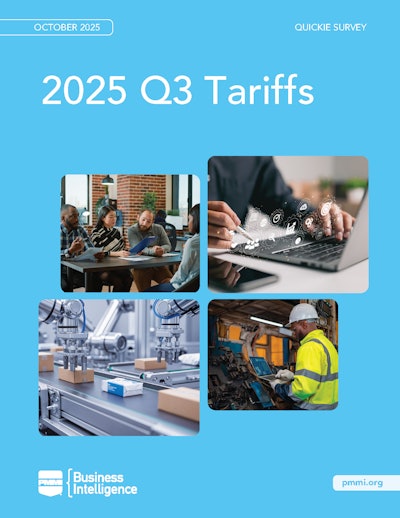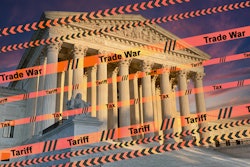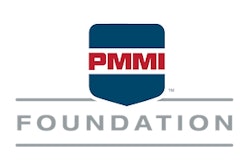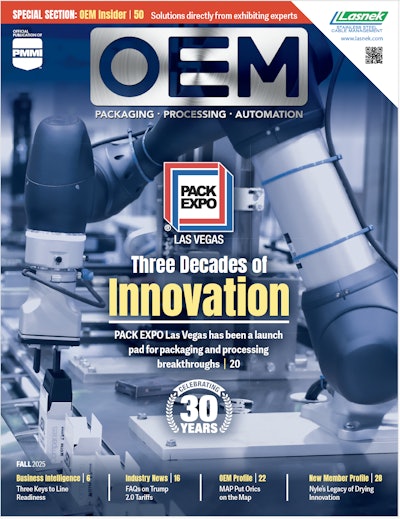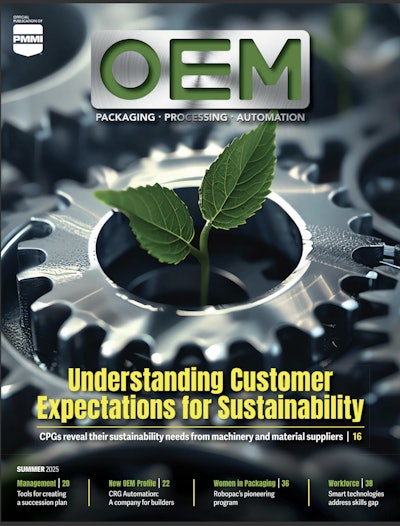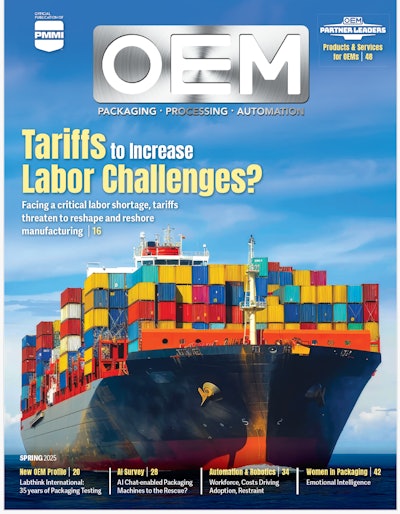When PMMI surveyed its members in July 2025 about the impacts of tariffs, most OEMs already felt squeezed by higher material costs and uncertain policy. Three months later, not only has there not been a pressure release, but the grip feels tighter for many.
According to PMMI’s Q3 2025 Tariffs Quickie Survey, nearly 9 in 10 OEMs (87%) say their business remains affected by tariffs, a bump up from 83% last quarter. The data reveals manufacturers still grappling with inflationary pressures, supply chain bottlenecks, and cautious customers delaying capital investment.
Material costs keep climbing
Rising input costs remain the most visible consequence. Almost half of respondents (47.6%) report increases of 11–20% in component pricing, compared to just 10% who cited similar hikes in Q2. Larger manufacturers—those with revenues above $100 million—reported the steepest cost increases, particularly in imported metals, electrical components, and specialty parts.
Nearly half also report longer lead times, as customs inspections and supplier disruptions compound the challenge.
Sales slowdowns and held projects

The survey underscores the cascading impact of tariffs on sales pipelines and quotes. More than a third (34%) of OEMs report that 2025 sales are tracking 10% or more below budget, with mid-sized companies ($10-$49 million) hit the hardest. Meanwhile, a quarter of respondents (26%) state that more than 10% of their quoted projects are now on hold as customers reassess spending or wait for tariff clarity. However, in Q2, 23% respondents reported having no projects on hold. This increased to 33% in Q3, suggesting some softening of customer hesitation.
Diversifying to stay competitive
To mitigate exposure, manufacturers are rethinking their sourcing strategies. Almost two-thirds of OEMs (63%) report pursuing dual sourcing or supplier diversification to reduce tariff risk, while nearly 20% are exploring relocation or reshoring options.
For smaller firms, however, such major supply chain changes are simply not feasible. Without the volume to justify reshoring, the focus is on strengthening already existing supplier relationships or negotiating shared costs. These responses align with broader manufacturing trends that favor resilient, regionally balanced supply chains over single-source dependencies.
Customer relationships tested
While 65% say customer relationships remain steady, about 30% acknowledge strained partnerships resulting from repeated cost adjustments and renegotiations.
Beyond financial pain, many OEMs expressed deep frustration with shifting trade rules and compliance burdens, with respondents calling for greater policy stability. As 2026 approaches, that need for clarity has become urgent. With costs rising, projects stalling, and global supply routes still in flux, OEMs remain focused on strategic flexibility and building networks and pricing models that can withstand ongoing geopolitical uncertainty.
